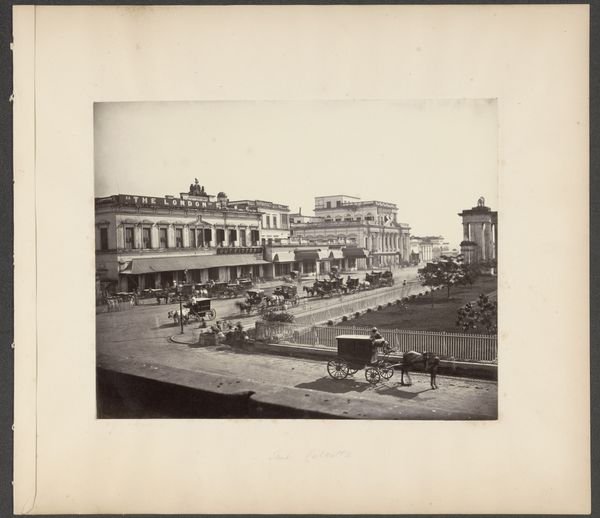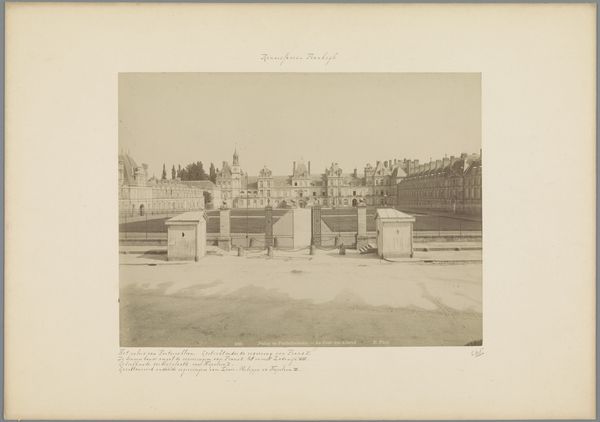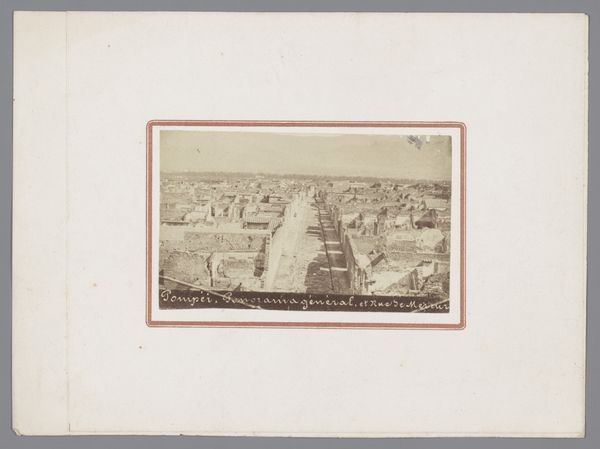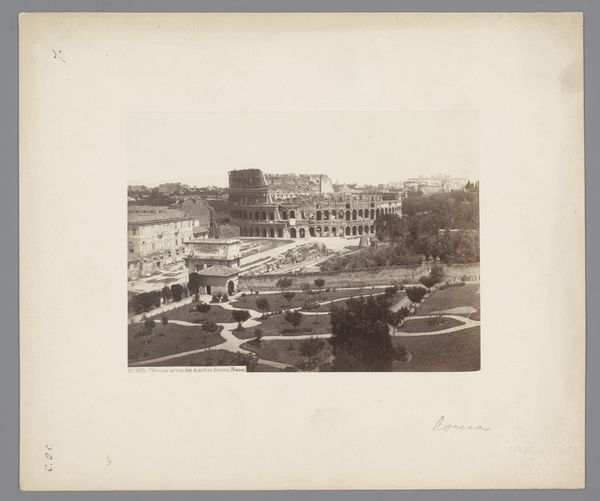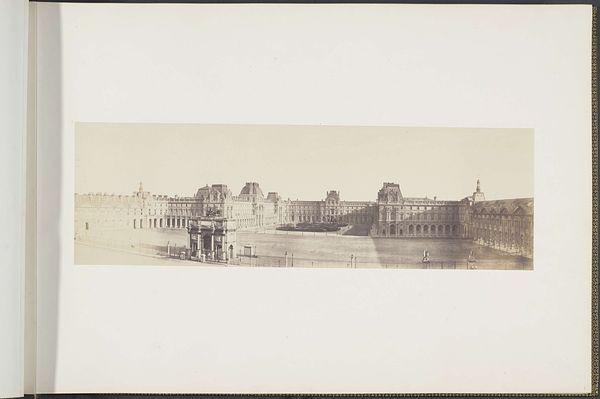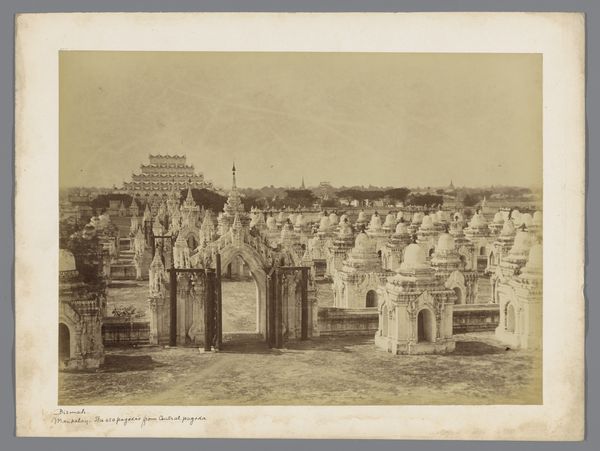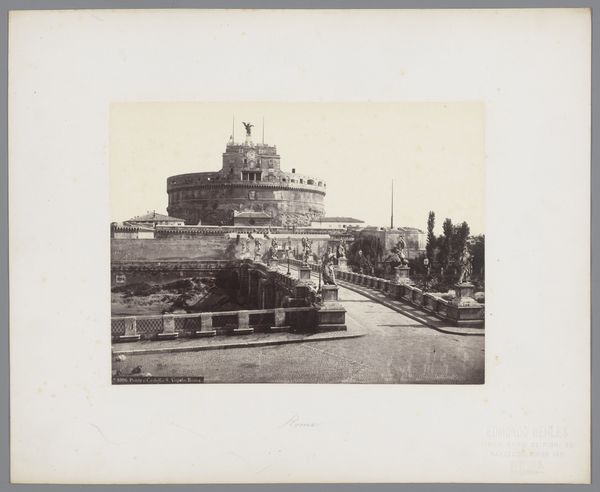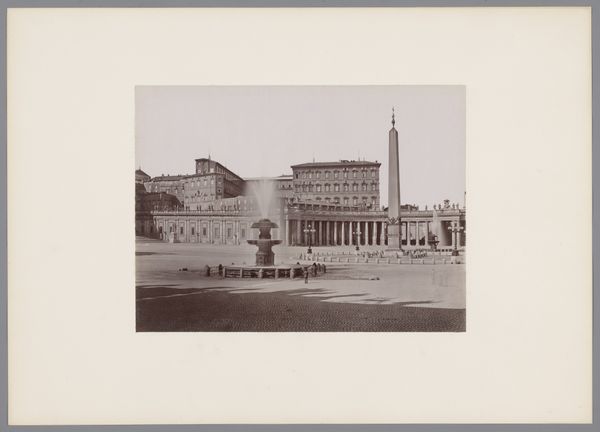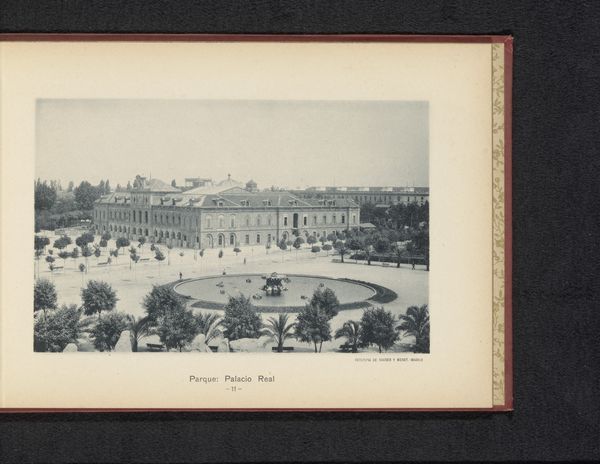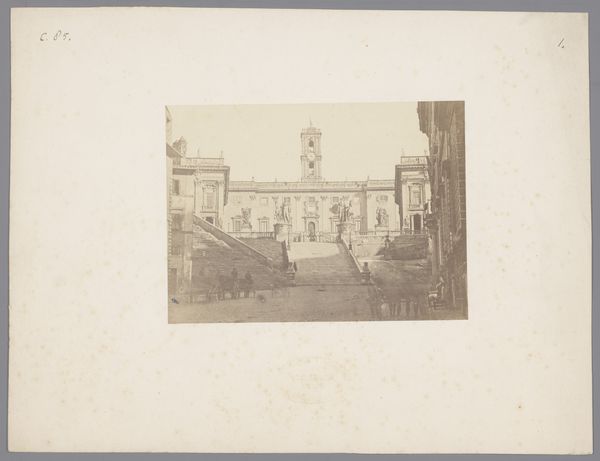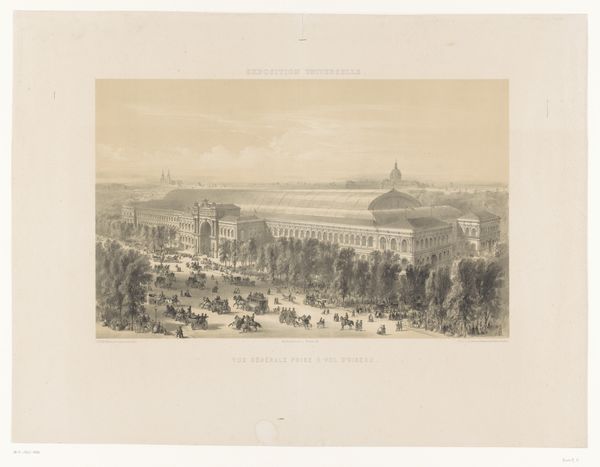
photography, gelatin-silver-print
#
asian-art
#
landscape
#
photography
#
orientalism
#
gelatin-silver-print
#
cityscape
Dimensions: height 176 mm, width 268 mm, height 346 mm, width 435 mm
Copyright: Rijks Museum: Open Domain
Curator: This gelatin silver print, created sometime between 1875 and 1900 by Johnston & Hoffmann, offers us a "View of Chowk Bazaar with the Bibi Mariam Cannon, Dhaka." It's quite a captivating glimpse into the past. Editor: The photograph really highlights the marketplace activities, but it feels oddly staged. The arrangements of mats laid out and the few figures that populate the scene strike me as meticulously placed, almost performative, don't you think? Curator: It speaks to the conventions of the time. Photography aimed to document, yes, but also to shape perceptions, fitting into what we now recognize as Orientalist perspectives. It aimed to capture a certain romanticized version of the East for a Western audience. The cannon itself became a symbol of colonial power. Editor: Power made visible! But think about the photographer's labor. Laying out all the shots just right, setting the exposure time, printing it, and also just the logistics of lugging equipment around at the time! Then you get this strangely still picture of supposedly bustling marketplace… I imagine it all took much effort. Curator: Absolutely. The act of photographing wasn't simply a mechanical process. Consider the distribution networks – How were these images circulated, viewed, and what impact did that have on cultural understanding and policy making back home? Editor: It's this sort of strange mixture of everyday life mixed with very obviously present colonial elements of Dhaka, a colonial creation of administrative power. I guess, to take something home of course these structures are part of your gaze… what’s in your mind's-eye when the trip ends, to showcase “the orient”. Curator: Precisely. And the cannon is a constant reminder that military and social control shapes even seemingly quotidian spaces such as the marketplace. That even this apparent day-to-day routine unfolds in a very controlled public square Editor: It almost makes you wish we could speak with all the invisible people who made those mats and structures of all that are captured in the scene; those hands in producing all of these materials. So interesting! Curator: Absolutely. Considering that unseen labor truly enhances how we see and understand this moment in time. Editor: Well, it's certainly something to think about.
Comments
No comments
Be the first to comment and join the conversation on the ultimate creative platform.
